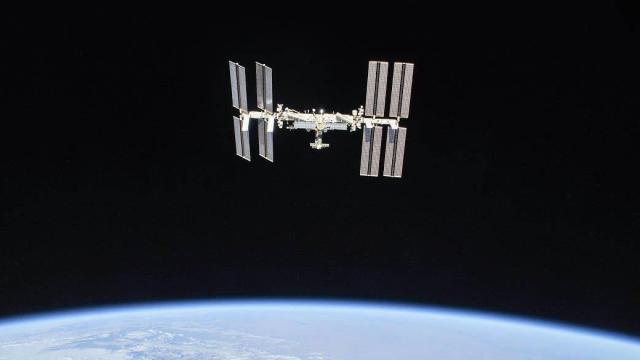ISS partners have a plan in place to deorbit the space station in nine years. A safety panel says this plan is now incomplete and potentially deficient as a result of the increasing density of low Earth orbit and as relations on the ground continue to deteriorate.
NASA’s Aerospace Safety Advisory Panel recently recommended that the space agency develop a deorbit plan for the ISS that can be immediately executed in case there is an emergency. During a public session on Wednesday, members of the panel expressed their concerns regarding an ISS controlled reentry plan that NASA had suggested in 2020, arguing that the ISS is “operating at risk today,” Space Policy Online reported.
Earlier this year, NASA solidified its plan to deorbit the ISS by using three Russian Progress cargo vehicles to lower the lab’s orbit and bring it down for reentry into Earth’s atmosphere. The current plan calls for this to happen in 2031, at which time the falling station will crash into the Pacific ocean and away from populated areas.
During the session, however, panel member Sandy Magnus revealed that “discussions among the ISS partners have identified technical and operational issues which need further addressing.” NASA was in the midst of discussions with its Russian partners to finalise the plan, but the relationship between the two space agencies has been tense as a result of Russia’s invasion of Ukraine. In February, for example, former head of the Russian space agency Roscosmos Dmitry Rogozin tweeted: “If you block cooperation with us, who will save the ISS from an uncontrolled deorbit and fall into the United States or Europe?”
In August, NASA put out a call for its commercial partners to develop a spacecraft capable of performing the final reentry manoeuvres for the ISS at the end of its life. In June, the space agency used a docked Cygnus spacecraft to manoeuvre the ISS, presenting another possible option. These developments aside, the space agency currently has no executable plan should there be a need for an emergency deorbiting. That risk has NASA’s safety panel worried, especially in consideration of the increasing number of satellites and spacecraft in low Earth orbit that surround the ISS. Indeed, the orbiting lab is frequently having to perform dodging manoeuvres to steer it away from hazards, including space junk.
“The risk to public safety and space sustainability is increasing every year as the orbital altitude in and around the ISS continues to become more densely populated by satellites, increasing the likelihood that an unplanned emergency ISS deorbit would also impact other resident space objects,” Magnus said. As a result, the panel recommended that “NASA should define an executable and appropriately budgeted deorbit plan.” This plan needs to be put in place as soon as possible, “as well as in place before the retirement of the ISS to ensure that the station is able to be deorbited safely,” the panel added.
In operation since 2000, the ISS has served as an orbiting laboratory for microgravity experiments. Upon the conclusion of the mission, the ISS will likely be replaced by commercial space stations as a consequence of the evolving public-private hybrid space industry.
More: NASA Wants More Spacecraft for Its Upcoming Artemis Moon Missions
